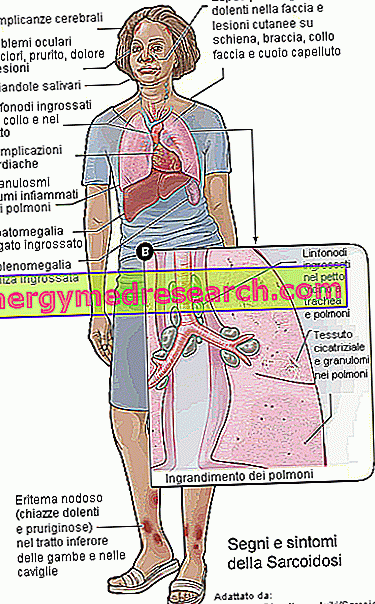Related articles: Achondroplasia
Definition
Achondroplasia is a genetic disease characterized by an abnormal development of the skeleton. More specifically, it is a form of chondrodysplasia, caused by alterations affecting the FGFR3 gene, which codes for the fibroblast growth factor receptor, which is important for regulating bone growth.
These mutations occur mostly sporadically, but achondroplasia can also be transmitted in an autosomal dominant manner (an altered copy of the gene from one of the parents to manifest the disease is sufficient, while in the homozygous state the disease is lethal).
Most common symptoms and signs *
- Ataxia
- Muscular atrophy and paralysis
- Muscular atrophy
- Weight gain
- brachydactyly
- Dyspnoea
- dolichocephaly
- Knee pain
- Hip pain
- Sore legs
- Hydrocephalus
- Hydrops Fetal
- hyperlordosis
- Intracranial hypertension
- Hearing loss
- Hypospadias
- Muscular hypotrophy
- macrocephaly
- Backache
- micrognathia
- Otalgia
- Paraplegia
- Paresthesia
- Joint stiffness
- Growth delay
- Snoring
- Drowsiness
- Spinal stenosis
- Nasal voice
Further indications
Children affected by achondroplasia have some typical clinical signs at birth: short stature, short limbs with respect to the trunk, which appears long and narrow, and macrocephaly, with prominent forehead and reduced development of the lower portion of the face (mediofacial hypoplasia). These skeletal deformations usually involve abnormal motor skills and delayed motor development, which manifest themselves with marked lumbar lordosis, brachydactyly (excessively short fingers), varus knee, fluctuating gait and reduced movement of the joints.
Achondroplasia can also lead to herniated disc and subsequent acute paraplegia.
Other common signs of achondroplasia include crowding of teeth, obesity and hearing disorders due to chronic ear infections.
Medial-facial hypoplasia with adenoid and tonsil hypertrophy can cause obstructive sleep apnea.
In adults, cardiovascular diseases and stenosis of the lower part of the lumbar medullary canal are common, with possible secondary neurological deficits.
The life expectancy of achondroplastic patients is only minimally reduced compared to the general population, but there is an increased risk of mortality during childhood, due to the possible compression of the spinal cord at the level of the foramen magnum and obstruction of the airways.
The diagnosis is based on clinical features and radiological observations; to provide further confirmation, genetic analysis can contribute, with the search for mutations in the FGFR3 gene. In risky situations, ie in the presence of other cases in the family, prenatal diagnosis is possible.
There is no definitive therapy for achondroplasia, but some orthopedic procedures are possible to improve the condition of the patients.



